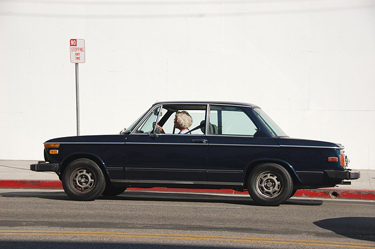Why Older Drivers Should Drive – Health, Habits and Strategies that Impact Safety

“Why older drivers should drive” may seem like a crazy statement but hear us out for a minute. There are ways to promote better safety and driving has been proven to help seniors maintain their health.
Percentage of Older Drivers is Increasing
It is a statistical reality that, over the next couple of decades, a greater percentage of the driving population will be elderly than ever in the past. The driving experience and safety track record of many older drivers becomes compromised by health issues, causing the risk of crashes to rise with age, especially after age 75. Age-related declines in vision, hearing, reflexes, and motor coordination often affect driving skills, as can certain medications and health conditions. As a result, the adult children of aging drivers often take away driving privileges as a means to their own peace of mind.
Lack of Driving Privileges Contributes to Depression in the Elderly
Unfortunately, per a recently published review in the Journal of the American Geriatrics Society, depression worsens in most individuals when their driving privileges are relinquished. It is not unusual for many older drivers to also experience worse physical functioning and faster declines in memory and other mental abilities. In fact, more people die within 3 to 5 years of giving up driving, compared to their peers who continued driving, even when researchers account for their initial health and degree of mental alertness.
Independence and the Older Driver
Obviously, driving is an important part of staying independent. Without the ability to drive, the aging individual can become isolated and many feel they are giving up part of their identity. Since the sheer act of getting into and out of a car and walking to a desired destination constitutes physical exertion, the loss of this routine contributes to a decline in physical activity, which can exacerbate health issues.
Older Drivers Often Make Safer Choices
Fortunately, the driving habits of many older drivers indicate an awareness of a physical decline that is then offset by a few common sense compromises:
- They often favor local roads over highways, exposing them to less traffic.
- Three in every four (79%) older drivers wear seat belts, compared to 66% under age 65.
- Since most no longer work and are, therefore, not required to be in a certain place at a certain time, many choose to limit their driving to when conditions are safest.
- They are less likely to engage in dangerous habits such as drinking or texting while driving.
Safe Strategies for Older Drivers
In addition to the above good decisions that many elderly drivers make, there are several steps they can also take to improve the odds of staying safe on the road. Adult children of older drivers can encourage the following behaviors:
- Use well-lit streets, intersections with left turn arrows, and easy parking.
- Plan your route before you drive.
- Avoid distractions such as the radio or cell phone.
- Ask the doctors involved to review prescription and over-the-counter medications and re-prescribe as necessary to minimize side effects and interactions.
- Have vision exams annually and change corrective lenses as necessary.
- Limit driving to only the most routine errands where routes and traffic patterns are well-known.
- Whenever possible, accept rides with friends or use public transportation for destinations that are new or in high-traffic areas.
With a little strategy and support from friends and loved ones, older drivers can retain their sense of independence longer without increasing safety risks for themselves and other drivers. This sense of independence can contribute to their overall health and possibly lengthen their lives.


